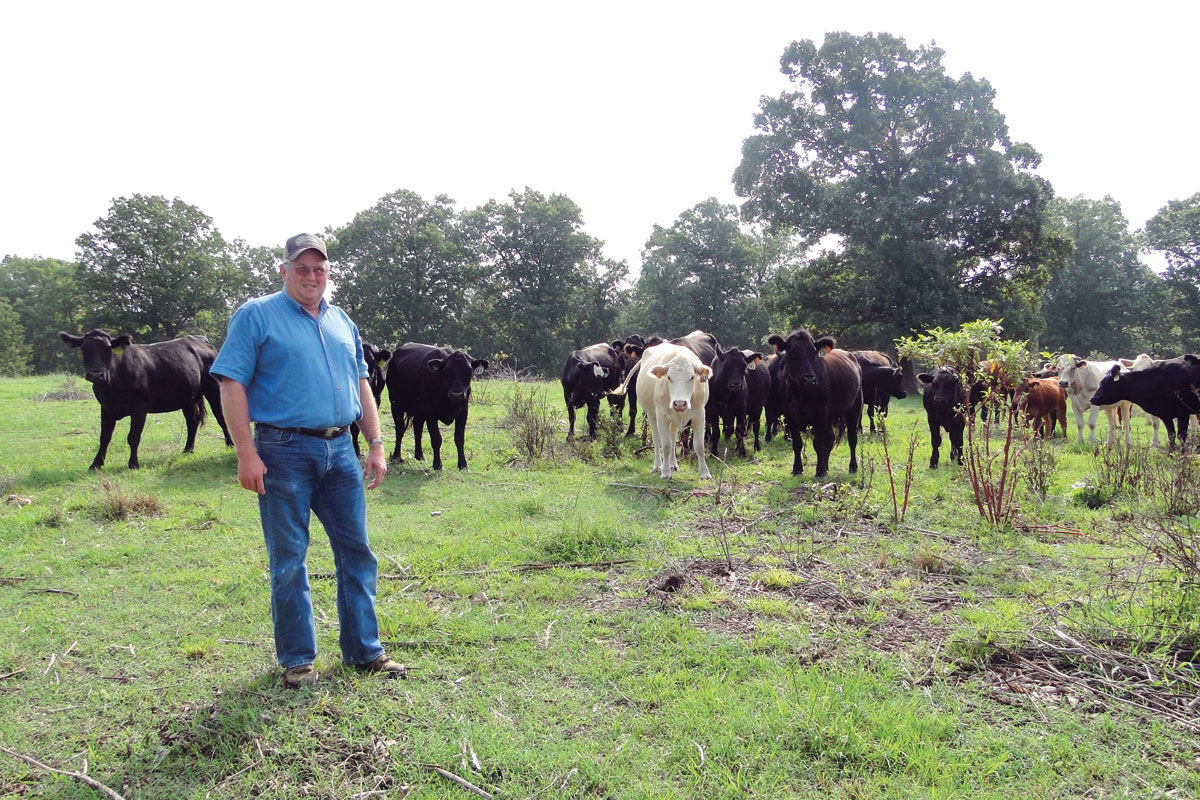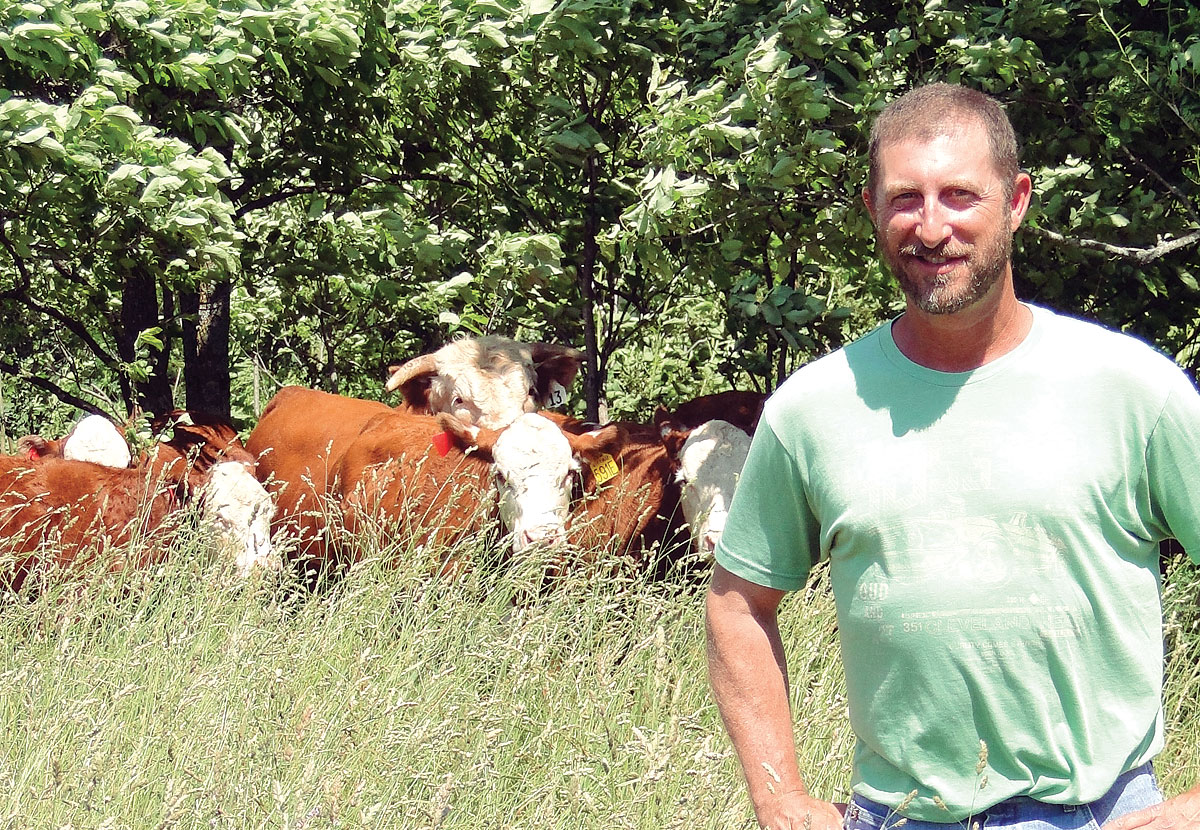
Jack Fain manages his cattle operation, as well as helping manage his mother’s herd
Jack Fain of Chewey, Okla., laughingly recalled being 7 or 8 years old when his dad brought home a bunch of hogs to raise. One old sow was going to have pigs. His dad had her in the barn, and Jack and his sister wanted to watch her farrow. The problem was it was winter, and they got too cold, escaped into the house and missed the entire event.
Jack started his cattle herd when he was 9. His father worked at the Tate Ranch and young Jack took care of all of the calves that needed special care, whether they were abandoned, injured or orphaned. For every so many calves, he received a calf of his own in payment.
Jack and his wife Billie have 500 owned and leased acres on which they run a cow/calf operation with 100 Angus-influenced mommas bred by eight bulls including one red Angus/Beefmaster cross, one black baldy, two full-blooded registered Angus and the rest commercial black bulls. As Jack explained, he’s always busy and, “grass doesn’t grow under his feet” because he not only takes care of his cattle but also his mother Evelyn’s herd of 80 mommas, plus helping out his son Jonathan who also raises cattle.
Evelyn’s contribution is watching all first-time heifers about to calve so she can call Jack when one is going to give birth.
One result of being busy is that his bulls run with his females at times. Nonetheless, calving seems to naturally fall into both fall and spring calving with the largest group born in the spring. Those calves are weaned in October and sold the following January and February in order to maximize profits. The smaller group is weaned in May and sold whenever a need is present. Jack sells at the Benton County Sale Barn in Siloam Springs because the owners are friends as well as neighbors.
Heifers are grouped together and bred during a three-month breeding season. Jack retains 10 to 20 percent of the heifers and culls from that group as they mature and uses them for replacements.
He culls his cows if they are older or if their teeth are missing, loose or short and look “like popcorn.”
The herd is worked twice a year a using a typical vaccine protocol. Lately, Jack has been banding his bull calves because the process is not as messy, but he is considering going back to castrating.
“Banding has its advantages, but castrating is certain and I’d rather not do the job twice,” explained Jack.
Evelyn’s place also has an 18-ton bin in which they store grain. They feed 14 percent or 16 percent protein rations depending upon the time of the year with protein tubs as an additional supplement in winter. Heifers are fed every day and the rest occasionally to keep them trained, which makes gathering for working easier.
As a young man, Jack worked for Tom Tate on a 33,000-acre farm and lost his thumb during a roping mishap after, ironically, warning some high school kids to keep their thumbs out of the way when they were helping to round up cattle. Therefore, Jack trained his cows to come to the feed so the dangers involved in gathering cattle using horses, ropes and dogs could be avoided.
Jack broadcast sprays for weeds, and on those years he needs to fertilize he uses a commercial granular fertilizer which is had the spray mixed with the granules so he can work the fields only once. The Fain pastures are comprised of bermuda, fescue and Johnsongrass with some clover. The five different plots of land contain ponds with the home place having a spring.
“Cows really like clover, but I don’t because it doesn’t dry out well when I cut hay,” Jack said. “Everything else is ready to be baled but I can still squeeze water out of the clover.”
Jack’s land is very near the Illinois River. He believes his biggest challenge is that in two separate places the river wipes out fences two or three times a year that have to be replaced each time.
“I’ve gotten pretty good at putting fencing in but I can’t say I like it much,” Jack said with a smile.
When Jack and Billie bought the land in the 1980s, property in the area was scarce because of the presence of two very large ranches. When his first 27 1/2 acres came up for sale, the lady who owned them wanted too much money. She finally decided she really needed to sell because she needed to move town as she aged. After talking to her son and being instructed to do whatever it takes to get the land sold, Jack then purchased the property simply because it was available though fortunately the land contained both the house and a spring.
Jack believes in giving back to the community and is very involved with his church. He is also one of the organizers of a community summer program called Youth Extravaganza. Typically 70 to 80 youngsters from ages 8 to 18 attend the free camp, which is located in a school purchased when the area was absorbed by a larger district.
“Our county is one of the poorest in the country. Several churches and individuals got together to provide experiences for our children who would probably never have the opportunity otherwise,” Jack explained.
One of the highlights is visiting Ground Zero Farms which offers a creek, waterslides and zip lines in addition to the farm itself. Church services are held and motivational speakers mix with board games, softball and other outside activities.






